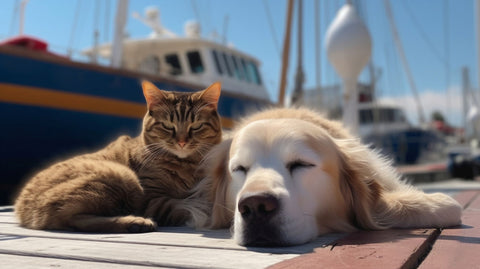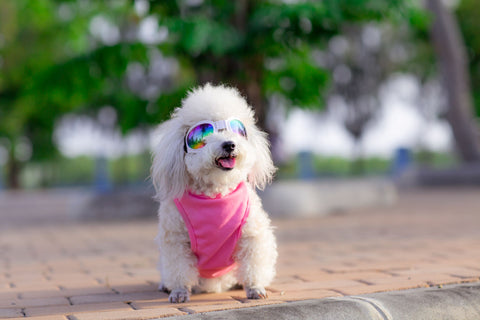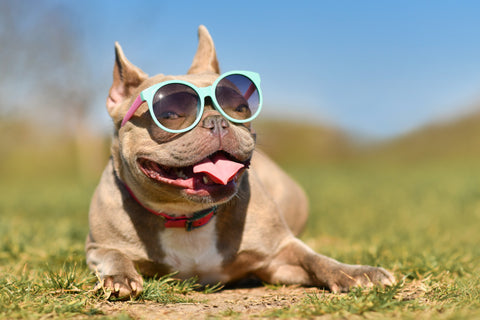

Hydration for Dogs and Cats: Best Practices for Healthy Pets
As pet parents, we all know how important it is to keep our furry friends hydrated. Fresh water is essential for their overall health and well-being, especially during the hottest months of the year. It's crucial for pet owners to understand the importance of proper hydration for their pets, not just during the summer, but throughout the year. To help pet owners better understand their companions’ needs, PetSafe established National Pet Hydration Awareness Month, which takes place each July and aims to educate pet owners about how crucial it is to ensure their dogs and cats drink plenty of water. However, it's not just about filling up their water bowl and calling it a day. Keeping their water bowl clean and fresh can make a significant difference in their hydration habits. Here are some pawsome tips to ensure your pet’s water bowl is always in tip-top shape, the best way to keep your furry friends healthy and hydrated.
July is National Pet Hydration Awareness Month
Why did PetSafe choose July as National Pet Hydration Awareness Month? Simple: It's HOT! By July, it's generally pretty hot across the country and it's a great time to remind pet parents from coast to coast about the importance of keeping their dogs and cats cool and hydrated.
How important is proper hydration for dogs and cats?
Proper hydration is crucial for dogs and cats as it supports digestion, circulation, and overall health. Dehydration can lead to serious health issues and even be life-threatening for pets. Ensure your furry friends have access to fresh water at all times to keep them healthy and happy.
Why Clean Water Matters
Just like us, pets prefer clean water. Dirty water bowls can harbor bacteria, mold, and even algae, which can lead to health issues for your pet. Regularly cleaning their bowl not only encourages them to drink more but also ensures they stay healthy and happy. Hydration plays a vital role in maintaining the health and wellness of our beloved furry companions. Just as we prioritize clean water for ourselves, ensuring that our pets have easy access to fresh and clean water is essential. Clean water not only promotes hydration but also prevents potential health risks associated with stagnant or contaminated water sources. By making a conscious effort to keep their water bowls clean and replenished, we are taking proactive steps towards safeguarding the health and wellness of our four-legged friends. Additionally, it is important to consider the location of their water bowl, as having it near their food or litter box may discourage them from drinking.
Tips for Keeping Your Pet's Water Bowl Clean
1. Clean Daily
Make it a habit to wash your pet's water bowl every day. Use hot, soapy water to eliminate any germs or residue. Rinse thoroughly to ensure no soap is left behind.
2. Use Pet-Safe Cleaning Products
Avoid using harsh chemicals or detergents. Opt for pet-safe cleaning products to avoid any harmful residues that could end up in your pet’s water.
3. Stainless Steel or Ceramic Bowls
Plastic bowls can develop scratches over time, which can harbor bacteria. Stainless steel or ceramic bowls are easier to clean and less likely to retain odors.
4. Fresh Water Daily
Refill your pet’s water bowl with fresh water at least once a day. If you notice the water getting dirty, change it more frequently.
5. Keep Multiple Bowls
If you have a busy schedule, keep a few clean bowls on hand. This way, you can quickly swap out a dirty bowl for a clean one without the hassle of immediate washing.
Deep Cleaning Routine
In addition to daily cleaning, it’s a good idea to deep clean your pet’s water bowl once a week. Here’s how to do it:
- Step 1: Soak the bowl in a mixture of one part white vinegar to one part water for about 10 minutes. This helps remove any stubborn residue and disinfects the bowl.
- Step 2: Scrub the bowl with a brush, paying extra attention to any corners or crevices.
- Step 3: Rinse thoroughly with hot water to ensure all vinegar and residue are removed.
- Step 4: Allow the bowl to air dry completely before refilling it with fresh water.
articlebanners1
Monitoring Water Intake
It’s also important to keep an eye on how much water your pet is drinking. If you notice any significant changes in their water intake, it could be a sign of a health issue, and you should consult your vet. Dogs generally need about one ounce of water per pound of body weight each day, while cats need about 3.5 to 4.5 ounces of water per five pounds of body weight. Puppies, on the other hand, may require even more water due to their growing age and higher metabolism.
Signs of Dehydration in Dogs
Dehydration in dogs can be a serious issue, so it's crucial to recognize the signs early. Common symptoms of dehydration in dogs include excessive panting, dry gums, lethargy, sunken eyes, and loss of skin elasticity. If you notice any of these signs, make sure to provide your pet with water immediately and seek veterinary attention if the symptoms persist. Regular monitoring of your pet's hydration levels and implementing proper water bowl cleaning routines can help prevent dehydration and keep your furry friend healthy and happy.
Signs of Dehydration in Cats
Dehydration in cats can also have serious consequences, including chronic dehydration, so it's essential to be aware of the signs. Cats may exhibit symptoms such as dry, tacky gums, loss of appetite, sunken eyes, lethargy, decreased skin elasticity, and vomiting when dehydrated. If you observe any of these signs in your cat, offer fresh water and consult your vet if the symptoms persist. By staying vigilant and maintaining a clean water bowl for your pets, you can ensure they stay hydrated and maintain optimal health.
Fun Hydration Tips
- Ice Cubes: Adding ice cubes to your pet’s water bowl can make drinking more fun and refreshing, especially on hot days.
- Water Fountains: Pet water fountains can encourage pets to drink more by providing a continuous flow of fresh water.
- Frozen Treats: Freezing your pet's treats in water is another great way to ensure they are staying hydrated while having fun.
- CBD Oil: CBD Oil can encourage your pet to drink more water and has cooling effects when applied topically.
Moisture-filled Foods
While dogs more commonly get all of the hydration they need from their water bowls, cats also rely on their food for moisture. Serving your cat a delicious wet food diet is a sure-fire way to make sure they are getting the moisture they need to stay healthy and hydrated. This is also a great option for picky or stubborn dogs who just refuse to drink enough water. Additionally, incorporating moisture-filled foods such as watermelon, cucumbers, lettuce, broccoli, and Brussels sprouts into their diet can also help keep your pets hydrated and healthy. For on-the-go hydration, consider teaching your dog to drink from a water bottle or bringing collapsible water bowls on adventures. Location also matters, as sensitive cats may need water bowls in low traffic areas. If you notice any signs of dehydration in your pet, it's important to consult a veterinarian immediately. They can provide proper treatment and advice for keeping your pet hydrated and healthy.
Importance of Electrolytes for Dogs and Cats
Electrolytes play an important role in maintaining hydration levels in dogs and cats. Just like humans, pets can lose electrolytes through activities like panting, urination, and sweating, especially during times of stress or when experiencing diarrhea or vomiting. Replenishing these essential minerals is key to keeping your furry friends properly hydrated. You can consult your vet for recommendations on electrolyte supplements or look for pet-specific electrolyte products to support their hydration needs effectively, a great choice for those who want their pets to stay healthy even during hard work or physical activity.
Conclusion
Keeping your pet’s water bowl fresh and clean is a simple yet crucial part of ensuring their health and happiness. By following these tips, you’ll be providing them with the best hydration possible, which will keep their tails wagging and their whiskers twitching. Cheers to healthy hydration and safe summers!
Remember, a happy pet is a hydrated pet! Stay paw-sitive and keep those bowls sparkling clean.
articlebanners2



